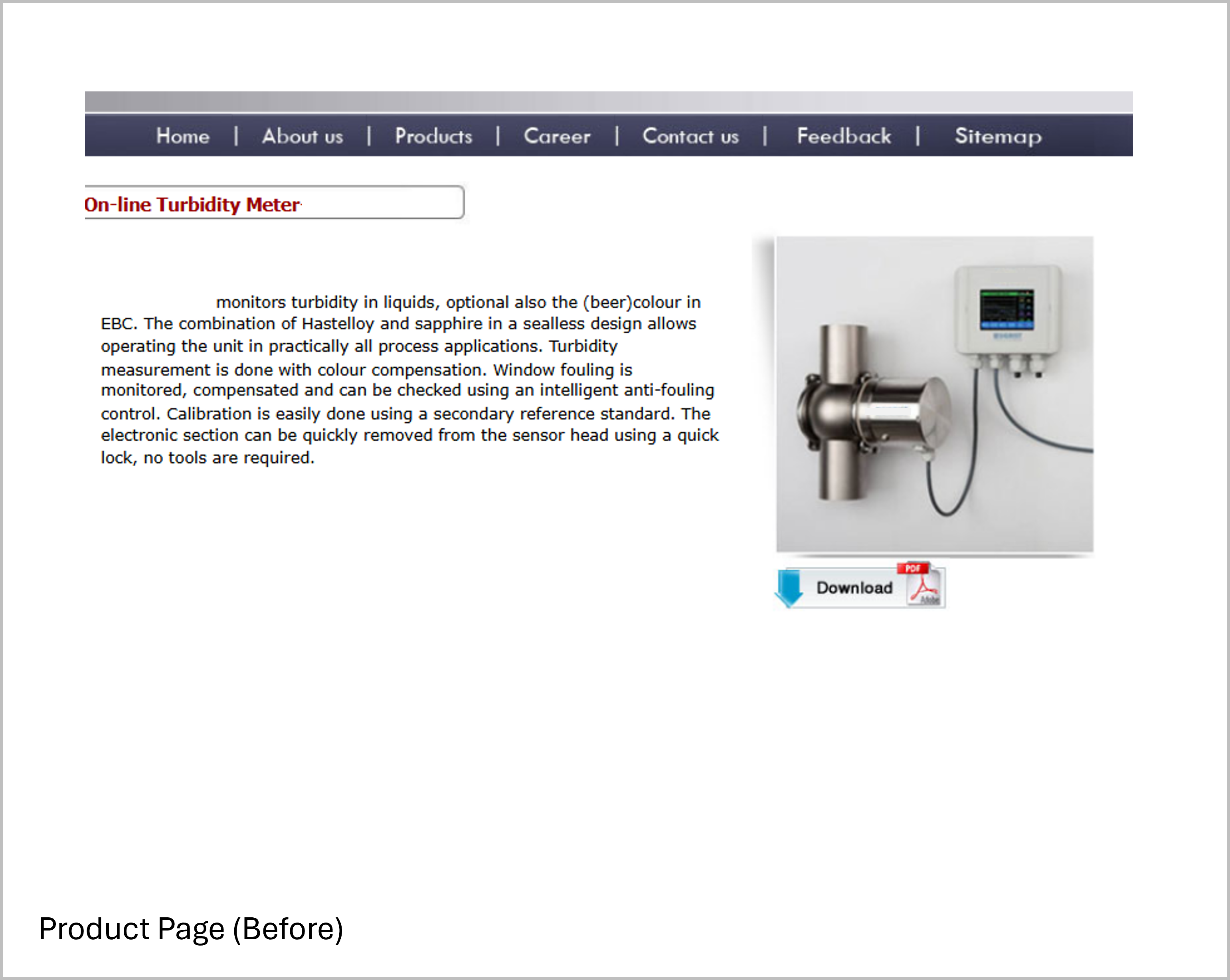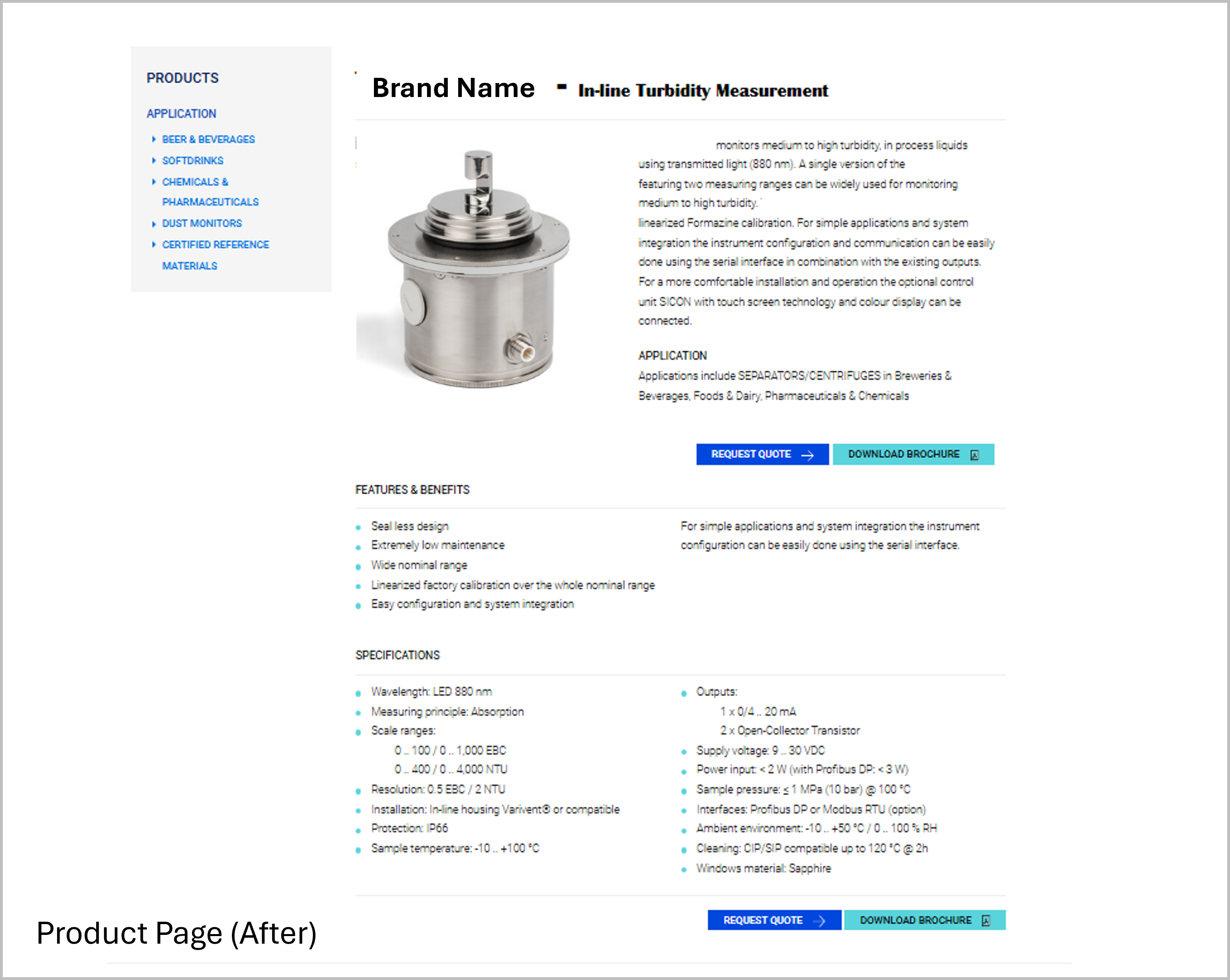Website Revamp for Ad-Readiness
Designing a human-centered website for the digital marketing era
Understanding Client Requirements
The client is a technical services company that provides process and laboratory instruments for monitoring various parameters with applications in Breweries, Distilleries, General Chemicals, Pharmaceuticals and Petrochemicals.
The client’s key requirements are as below:
1. They are looking for a new, contemporary-looking website
2. They want their website to provide more clarity about the products and its applications.
3. They want to explore online ads, particularly Google Ads.
Taking User and Marketing Perspectives
By taking an audit of the old website and engaging in discussions with the stakeholders we identified a few challenges.
1. From a User Perspective: The client distributes a range of products that may be used for several applications. Their current website briefly focuses on the beer manufacturing industry and doesn’t provide clarity about other product applications. The website is static and is not mobile-compatible. The content is not organized logically. Some products have little or no description and most product specifications are only accessible after downloading the brochure.
2. From a Marketing Standpoint: The client needs a website with pages that can also serve as landing pages for PPC Ads. The pages need a lot of improvement to serve as landing pages. Due to resource constraints additional landing pages are unlikely to be created once the website is complete. The website is not optimized with relevant keywords either.
3. Other Challenges: The client does not have an in-house website developer or IT support. They require a content management system that can be handled in-house. The client has been receiving too many irrelevant inquiries for products.
Defining the Objective
Create a website that has a user-friendly navigation and can be viewed on a mobile, tab and desktop device. It must also have suitably designed pages that can double up as landing pages for online ads.
Recognizing Potential Solutions
Following multiple discussions with the stakeholders it we decided that the client needs to:
1.Build a brand-new responsive website on a content management system that is fairly easy to manage
2.Categorize products based on application/industry by providing a Product Catalogue for each application
3.Create product and product catalogue pages that are ad-ready and focus on the strategic placement of CTAs (call to action)
4.Use keywords in addition to model names for better product identification and SEO — pages, URLs, etc.
5.Reimagine content classification, organization and website navigation for a better user experience
6.Integrate a detailed contact form that supports the client with more information about the potential buyer and filters out non-serious inquiries
Executing Key Activities
Once we knew what we wanted to achieve, we focused on a few key activities:
1| Navigation Architecture: Designed the navigation framework, information architecture
2| Prototyping: Designed a low-fidelity prototype of the website UI based on the requirements discussed
3| Content Planning: Planned content and resources — brochure downloads, images specification tables, etc.
4| Optimization: Identified keywords for on-page SEO — content, title, meta-data, URLs, etc.
5| Measurement: Identified key measurements (micro and macro conversions) to track on Google Analytics
6| Ad Campaign Creation: Created test campaigns and designed ads in different Google Ads formats
Low-Fidelity Prototypes
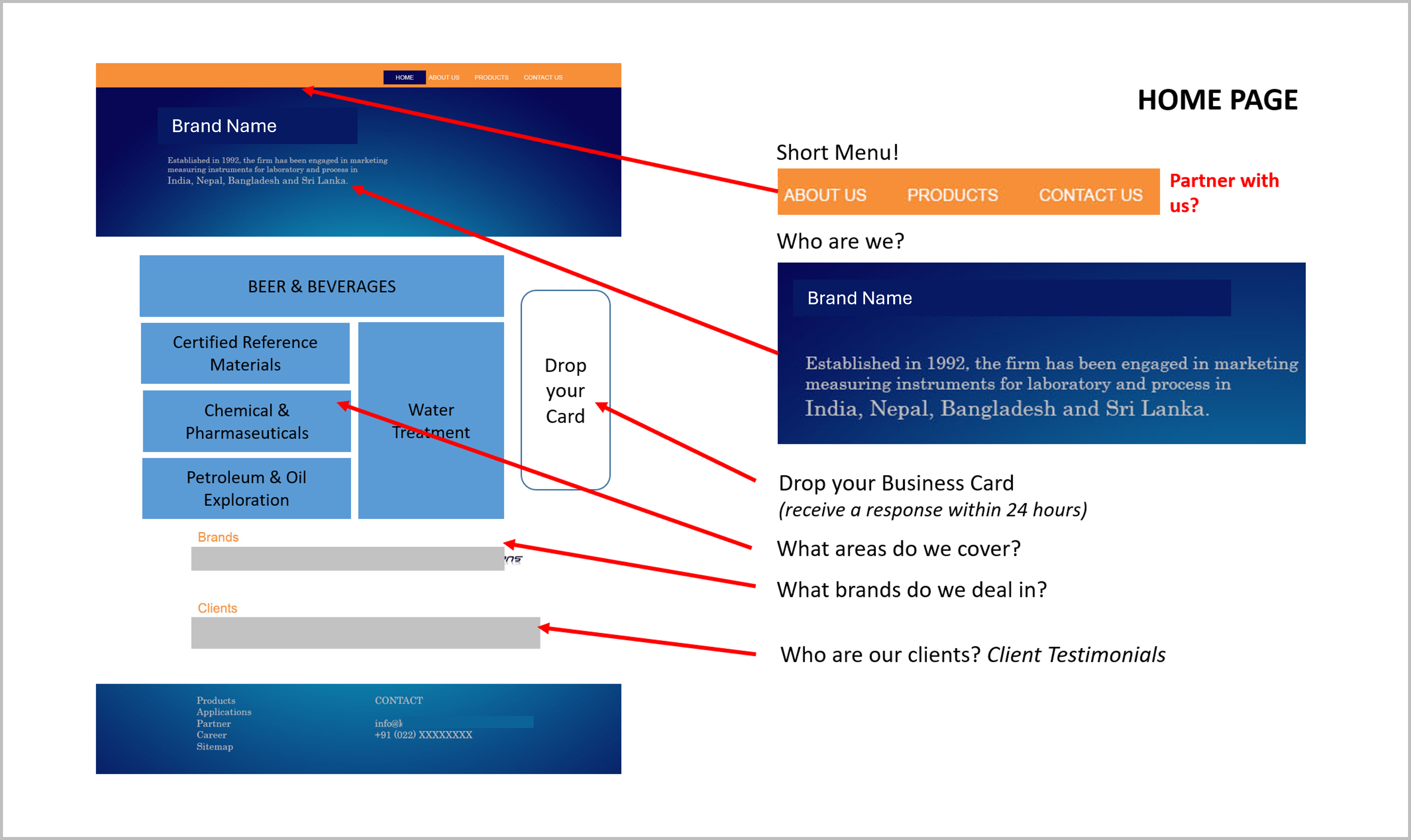
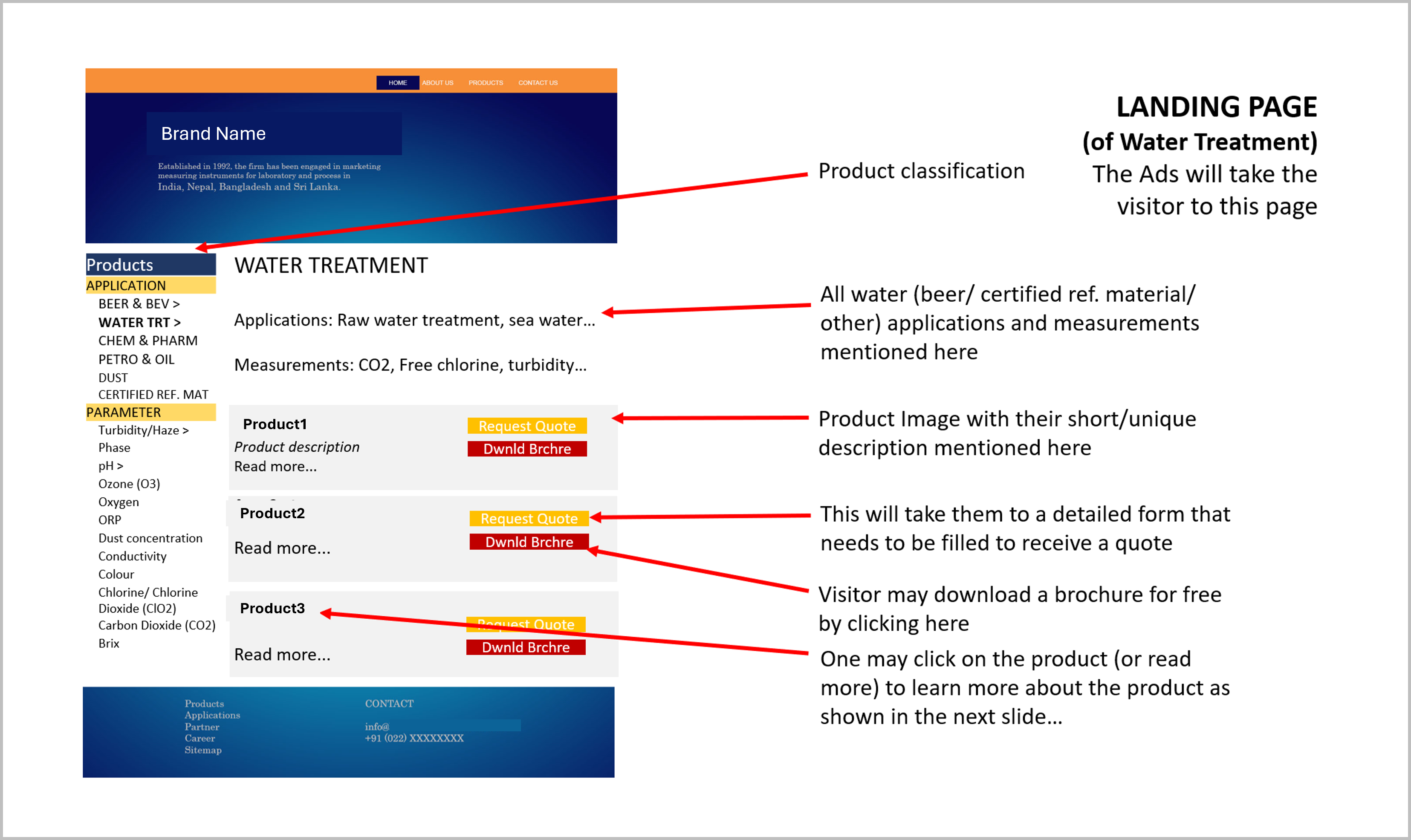
Outcomes: Our Successes
In the end, we achieved a few important things. We ensured that:
- Multi-device Compatibility: The website is responsive so it can adapt to be viewed on the desktop, tab, and mobile. It is easy to navigate and has well structured information about the company and its products.
- Clear Product Classification: Its application-specific product catalogue lists all the products that are relevant to that specific industry/application. The catalouge also has relevant CTAs and can be used as a landing page for industry-specific keywords.
- Detailed Product Information and CTAs: The product page gives all product information upfront to provide better clarity about specifications and precision of the product. Every product page has a description and call-to-action (both above and below the fold) and can be used as a landing page for ads.
- High-quality Inquiries: The contact form has fields that give a clearer idea of the inquirer’s requirements and encourages only serious inquiries.
- Digital Marketing Ready: Google Analytics is integrated and ready to track some micro and macro conversions such as brochure downloads and form submissions. Google Ads campaigns are set up to run some initial test campaigns.
Website - Home Page
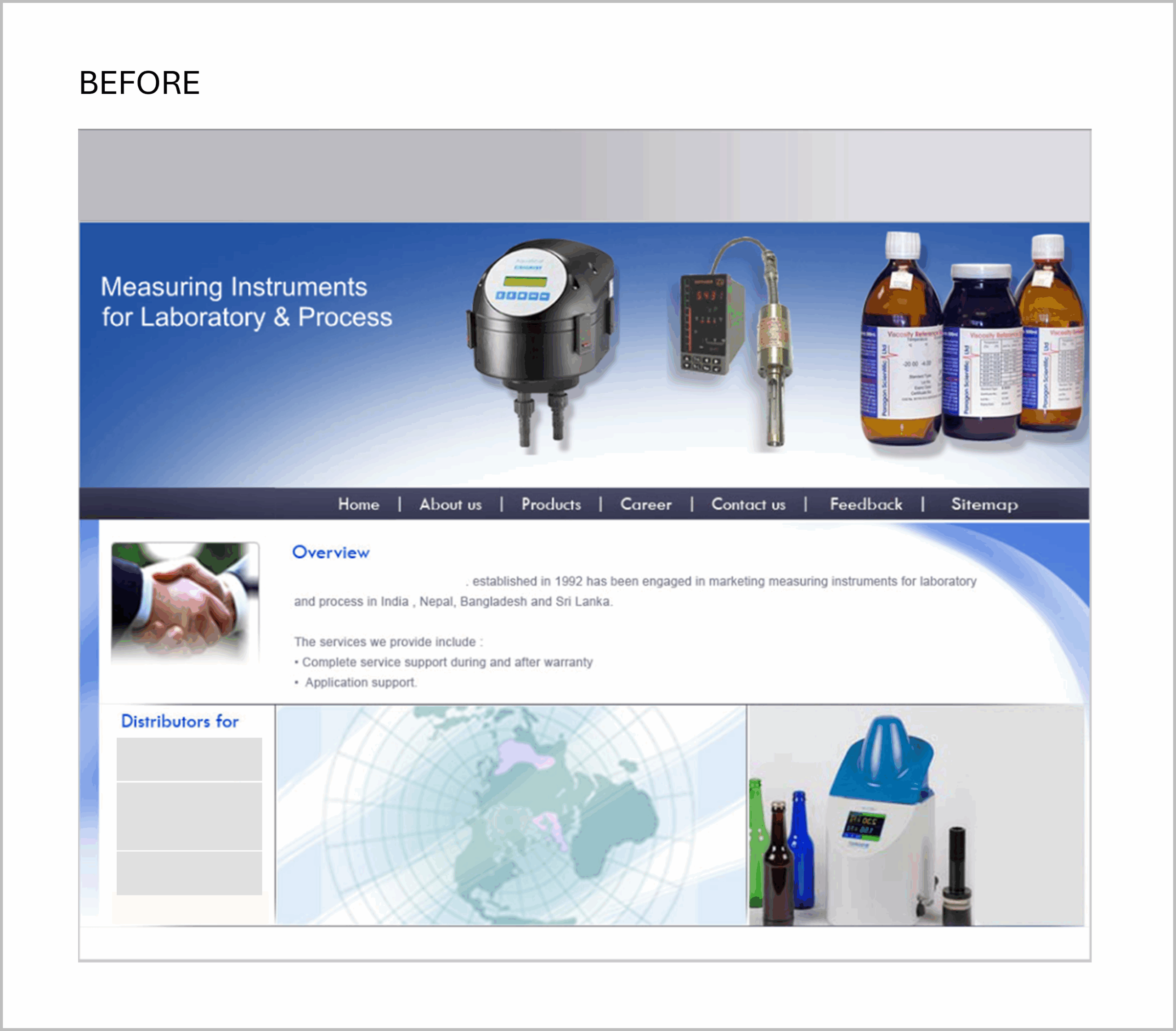
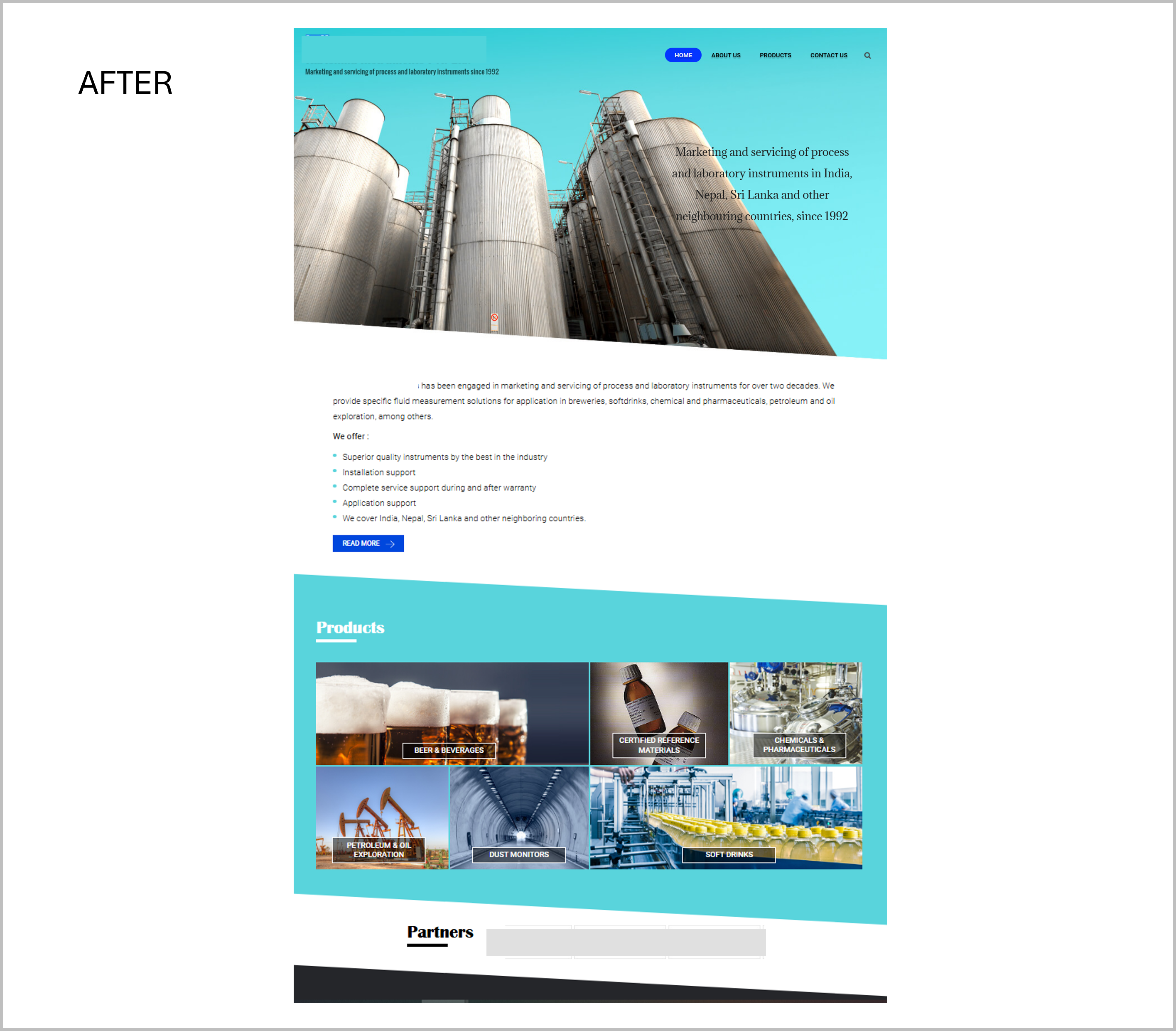
New Product Classification (Home & Menu)

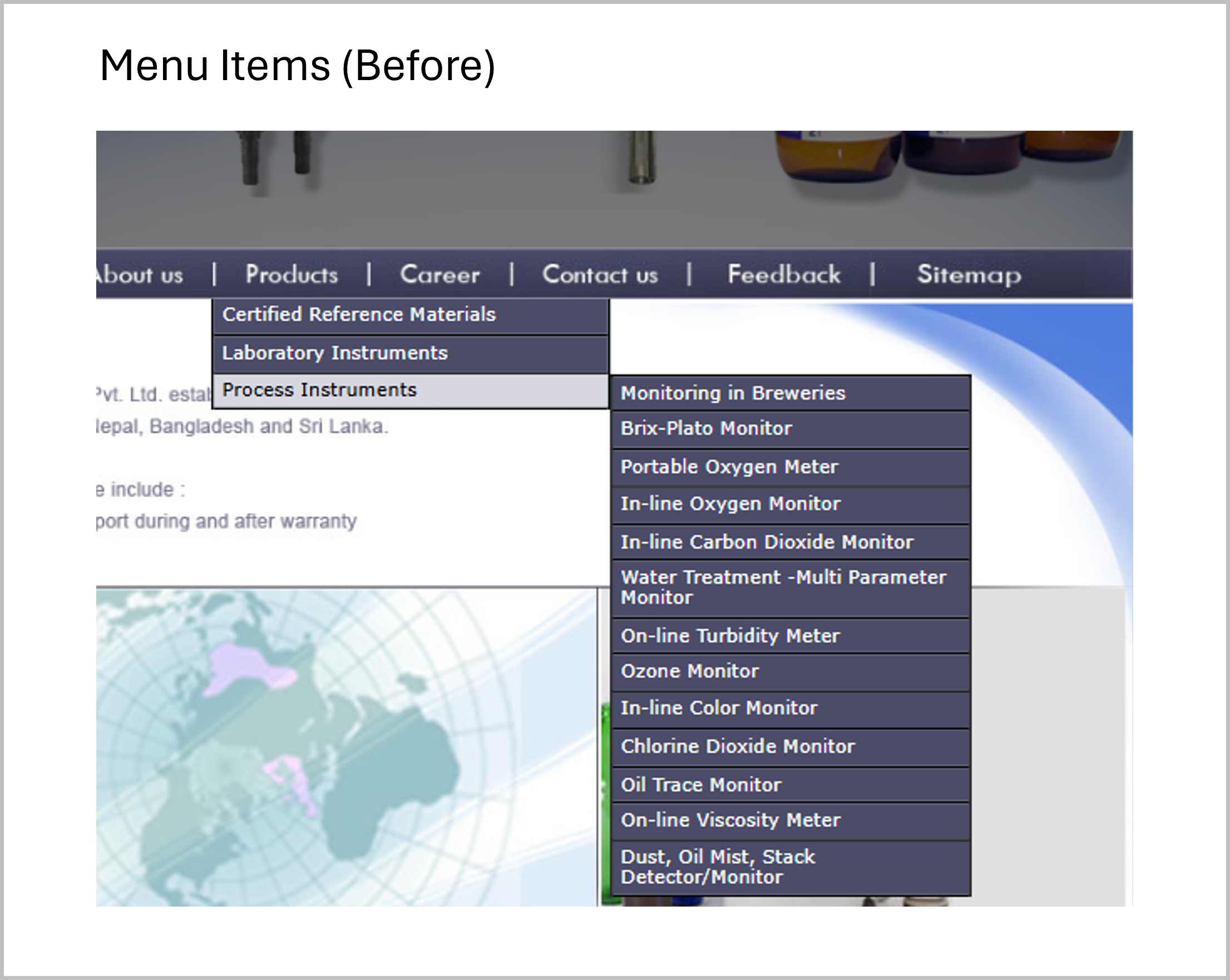
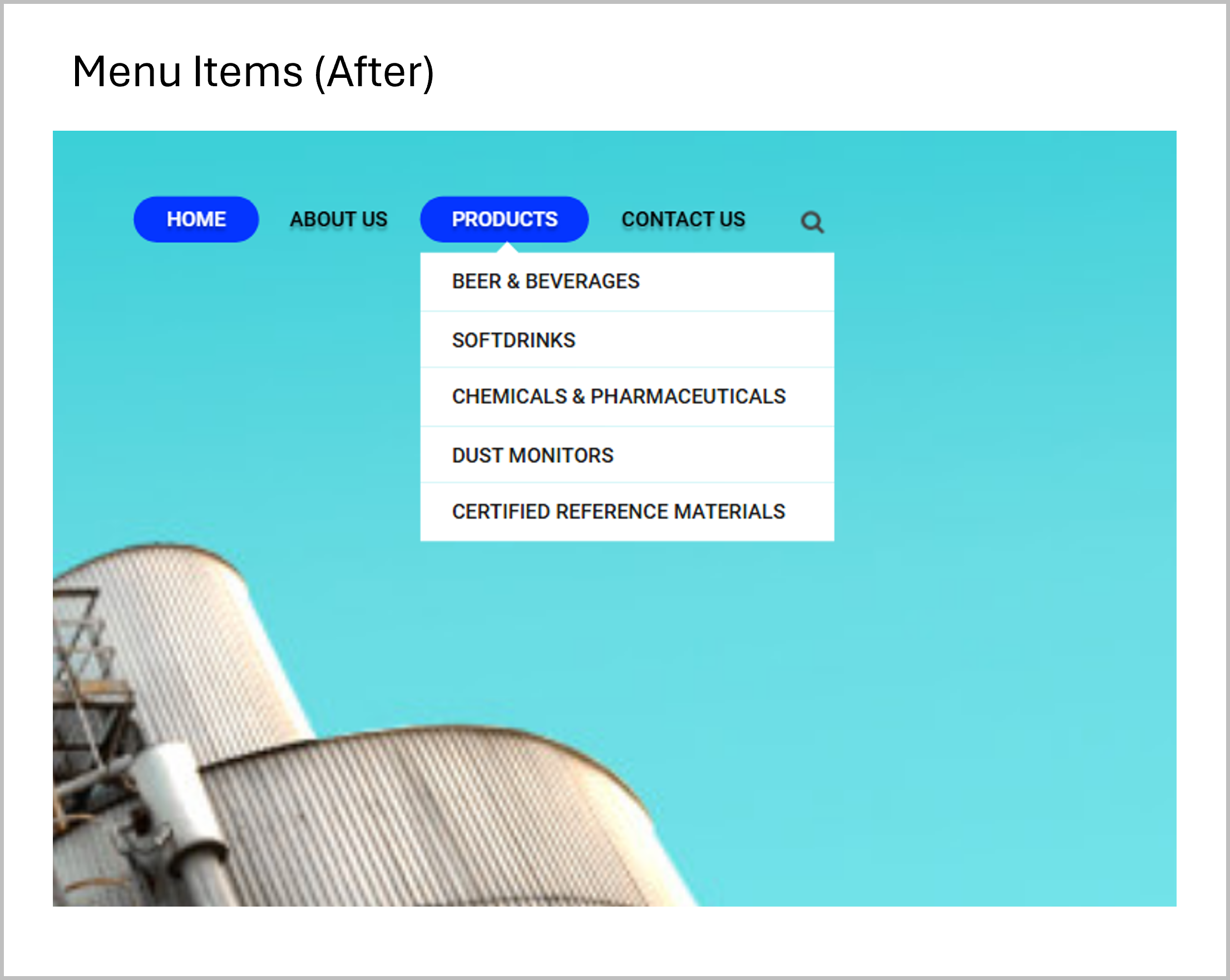
Product Pages
